Thingiverse

Delta Wilde Hummel by wersy
by Thingiverse
Last crawled date: 3 years, 3 months ago
This is the printed version of the “Wilde Hummel” (wild bumblebee), which Gerd Wegner designed in 2011 in a conventional rib design.http://www2.rc-network.de/forum/show...de-Hummel-quot
Specifications
airfoil: NACA 0006
wing span: 1004mm
wing chord: 432/166 mm
CoG: 467 mm from the front of the fuselage
overall weight: 1185 g (with 1300mAh 3S battery)
wing area: 35 dm²
wing loading: 34 g/dm²
motor: Propdrive 28-36 1200KV
propeller: Aeronaut CAM Aeronaut Carbon Classic 10 x 6"
static thrust: 1300 g (3S Lipo)
battery: Turnigy 1300 mAh 3S
motor camber: tilted -1.5° long version, -2° short version
In this first test flight it is still underpowered to get really wild. But it is enough for comfortable flights.
The model is amazingly easy to fly.
https://www.youtube.com/watch?v=rsS5YetUQyA
The video quality is less good - this time I had to film myself.
There are two hull versions.
The longer version (lv) is the one shown in the picture and video.
Because of the long nose, the battery had to go all the way back to the front connector tube.
Therefore I could only use the small 1300 mAh 3S battery. But it is possible to interrupt the carbon tube so that the battery can be pushed further back. For this purpose a bearing washer can be glued to the inner ribs.
With the shorter version (sv) this should not be necessary.
Therefore only fuselage 1 and fuselage 2 are exchanged, all other parts are identical.
To avoid confusion (split and unsplit parts, long and short version), I upload these parts into a separate design "Short fuselage for Wilde Hummel".https://www.thingiverse.com/thing:4614006
If you have a smaller printer you can take the splitted parts and glue them together.
There is a template to align the wing and the fuselage. This help ensures that the wings are glued together true to airfoil.
Recommended Print Settings
Attention
The wings are designed to print using 0.5 mm width, 4 bottom and 4 top layers, no infill, 1 perimeter only.
Should you print thinner walls, the perimeter of the upper side may not stick well enough
to the perimeter of the inner stiffening construction.
If you apply thicker walls, the perimeters will not come out continuously in one uninterrupted turn.
The layers must build up as if you were printing in spiral vase mode. Only then you get a
smooth surface on the upper side.
If unsatisfied with the results, try out 0.49 or 0.48 width in your slices settings. It
depends whether you use Cura, Slic3r, S3D or what you have. I suggest you experiment with
some tests before printing the whole thing.
The second point is: Should you print lesser layer heights, the inner stiffening
construction will not connect well to the top and bottom layers. You will suffer a gap inbetween.
Wing parts: layer height =0.25mm, width =0.5mm, 1 perimeter, 4 bottom/top layers, no infill
Wingend: layer height =0.15mm, width =0.5 mm, 1 perimeter, 4 bottom/top layers, no infill
Elevon inner: 6 solid bottom layers, spiral vase mode, no top layers
Elevon outer: 4 solid bottom layers, spiral vase mode, no top layers
Elevon joint: no bottom/top layers, spiral vase mode
Elevon appendix: 4 solid bottom/top layers, no infill
Fin: layer height =0.25mm, width =0.5mm, 1 perimeter, 4 solid bottom layers, no infill, spiral vase mode, no top layers
Fin top: layer height =0.25mm, width =0.5mm, 1 perimeter, 3 solid bottom layers, no infill, spiral vase mode, no top layers
Fin bottom: layer height =0.25mm, width =0.5mm, 1 perimeter, 4 solid bottom layers, 3 top lyers, no infill
Fuselage
The wall thickness is 0.8 mm for all fuselage parts.
So print width 0.4 mm, or a little more, so that nothing is printed between the two lines/perimeters.
The motor flange is 2.2 mm thick. It must be filled with solid layers. Also the rounding of approx. 2.8 mm until the wall thickness reaches 0.8 mm.
That means the first 25 layers should be printed solid. However, the Prusa Slicer has a problem with solid layers. There you have to add infill.
Also slightly more print width, otherwise some additional material will be blotted into the 0.8 mm wall. This is because an outer wall in the conical area is always a little wider.
Therefore, I made the following settings in Prusa Slicer
Fuselage 1: print width 0.43mm, layer height 0.2mm, 2 perimeters, 25 solid bottom layers, no top layers
Fuselage 2 and 3: print width 0.41mm, layer height 0.2mm, 3 perimeters, 3 solid bottom/top layers
Access panels: print width 0.4mm, layer height 0.2mm, spiral vase no solid bottom/top layers
Acces panel brackets: print width 0.5mm, layer height 0.2mm, spiral vase no solid bottom/top layers
Specifications
airfoil: NACA 0006
wing span: 1004mm
wing chord: 432/166 mm
CoG: 467 mm from the front of the fuselage
overall weight: 1185 g (with 1300mAh 3S battery)
wing area: 35 dm²
wing loading: 34 g/dm²
motor: Propdrive 28-36 1200KV
propeller: Aeronaut CAM Aeronaut Carbon Classic 10 x 6"
static thrust: 1300 g (3S Lipo)
battery: Turnigy 1300 mAh 3S
motor camber: tilted -1.5° long version, -2° short version
In this first test flight it is still underpowered to get really wild. But it is enough for comfortable flights.
The model is amazingly easy to fly.
https://www.youtube.com/watch?v=rsS5YetUQyA
The video quality is less good - this time I had to film myself.
There are two hull versions.
The longer version (lv) is the one shown in the picture and video.
Because of the long nose, the battery had to go all the way back to the front connector tube.
Therefore I could only use the small 1300 mAh 3S battery. But it is possible to interrupt the carbon tube so that the battery can be pushed further back. For this purpose a bearing washer can be glued to the inner ribs.
With the shorter version (sv) this should not be necessary.
Therefore only fuselage 1 and fuselage 2 are exchanged, all other parts are identical.
To avoid confusion (split and unsplit parts, long and short version), I upload these parts into a separate design "Short fuselage for Wilde Hummel".https://www.thingiverse.com/thing:4614006
If you have a smaller printer you can take the splitted parts and glue them together.
There is a template to align the wing and the fuselage. This help ensures that the wings are glued together true to airfoil.
Recommended Print Settings
Attention
The wings are designed to print using 0.5 mm width, 4 bottom and 4 top layers, no infill, 1 perimeter only.
Should you print thinner walls, the perimeter of the upper side may not stick well enough
to the perimeter of the inner stiffening construction.
If you apply thicker walls, the perimeters will not come out continuously in one uninterrupted turn.
The layers must build up as if you were printing in spiral vase mode. Only then you get a
smooth surface on the upper side.
If unsatisfied with the results, try out 0.49 or 0.48 width in your slices settings. It
depends whether you use Cura, Slic3r, S3D or what you have. I suggest you experiment with
some tests before printing the whole thing.
The second point is: Should you print lesser layer heights, the inner stiffening
construction will not connect well to the top and bottom layers. You will suffer a gap inbetween.
Wing parts: layer height =0.25mm, width =0.5mm, 1 perimeter, 4 bottom/top layers, no infill
Wingend: layer height =0.15mm, width =0.5 mm, 1 perimeter, 4 bottom/top layers, no infill
Elevon inner: 6 solid bottom layers, spiral vase mode, no top layers
Elevon outer: 4 solid bottom layers, spiral vase mode, no top layers
Elevon joint: no bottom/top layers, spiral vase mode
Elevon appendix: 4 solid bottom/top layers, no infill
Fin: layer height =0.25mm, width =0.5mm, 1 perimeter, 4 solid bottom layers, no infill, spiral vase mode, no top layers
Fin top: layer height =0.25mm, width =0.5mm, 1 perimeter, 3 solid bottom layers, no infill, spiral vase mode, no top layers
Fin bottom: layer height =0.25mm, width =0.5mm, 1 perimeter, 4 solid bottom layers, 3 top lyers, no infill
Fuselage
The wall thickness is 0.8 mm for all fuselage parts.
So print width 0.4 mm, or a little more, so that nothing is printed between the two lines/perimeters.
The motor flange is 2.2 mm thick. It must be filled with solid layers. Also the rounding of approx. 2.8 mm until the wall thickness reaches 0.8 mm.
That means the first 25 layers should be printed solid. However, the Prusa Slicer has a problem with solid layers. There you have to add infill.
Also slightly more print width, otherwise some additional material will be blotted into the 0.8 mm wall. This is because an outer wall in the conical area is always a little wider.
Therefore, I made the following settings in Prusa Slicer
Fuselage 1: print width 0.43mm, layer height 0.2mm, 2 perimeters, 25 solid bottom layers, no top layers
Fuselage 2 and 3: print width 0.41mm, layer height 0.2mm, 3 perimeters, 3 solid bottom/top layers
Access panels: print width 0.4mm, layer height 0.2mm, spiral vase no solid bottom/top layers
Acces panel brackets: print width 0.5mm, layer height 0.2mm, spiral vase no solid bottom/top layers
Similar models
thingiverse
free

Flying Wing Buratinu by wersy
...ve designed a special fuselage nose.
fuselage 1 rear-mounted mc3
firewall rear-mounted
it has already integrated 3° motor camber.
thingiverse
free

Twisted vase.
...irst layer and top solid infill can be set to 0.5mm)
3 bottom layers
0 top layers
0% infill
no supports
or print it in vase mode.
thingiverse
free

Simple Vase by vikram31
...nozzle and set the layer height to 0.6 mm and line width to 1.0 mm)
for solid mode:
top layer - 0
infill - 0%
wall line count - 3
thingiverse
free

Simple Vase by vikram31
...nozzle and set the layer height to 0.6 mm and line width to 1.0 mm)
for solid mode:
top layer - 0
infill - 0%
wall line count - 3
thingiverse
free

Classical Spiral Vase by markwheadon
...aled to whatever size suits. if you change its size then don't forget to scale the number of solid bottom layers accordingly.
thingiverse
free

Speedy "Red Midi Swept Wing" by wersy
...0 mah 3s 40~50c lipo
motor camber: tilted -4 degrees
side pull: none
propeller: aeronaut cam aeronaut carbon classic 10 x 6"
thingiverse
free

Speedy Red Midi Wing by wersy
... in the slicer.
the cylinder must be printed hollow, with only 2 or 3 perimeters.
then you have to re-cut the bushing with a tap.
cults
free

Speedy "Red Midi Swept Wing"
...0 mah 3s 40~50c lipo
motor camber: tilted -4 degrees
side pull: none
propeller: aeronaut cam aeronaut carbon classic 10 x 6"
thingiverse
free

Speedy "Red Swept Wing" RC by wersy
...after the other, and see that you can get them out again, if needed. if both pipes are inside, the wings can not be pulled apart!
thingiverse
free

Curvaceous Vase by markwheadon
...spiral vase mode then slice it with five bottom layers, no top layers, one perimeter (0.55-ish mm) and no fill.
then add flowers!
Wersy
thingiverse
free

Fan 80 mm.stl by wersy
...fan 80 mm.stl by wersy
thingiverse
just a fan 80 mm for your planning.
thingiverse
free

LED Ring Mount for Printrbot by wersy
...led ring mount for printrbot by wersy
thingiverse
this mount can be fastened on one side of the extruder.
thingiverse
free

Penholder Tubes by wersy
...one for the kids with some more tubes.
it is by far not so artfully because i am just an engineer - though i hope you like it :-)
blendswap
free

WERSI Galaxis
...ocal z direction, the lights will switch on or of. for moving the hole organ there is a squared empty.
have fun with this peace.
thingiverse
free

Carrier to carry the Printrbot by wersy
...ty small and not so heavy it is a bit cumbersome to transport because the only stiff parts are the bases connected with the rods.
thingiverse
free
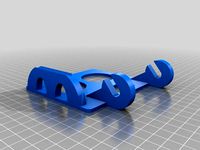
Prusa I2 holder for wersy's case for RRD full graphic LCD by byteborg
...i like the rrd smart lcd and have it integrated in wersy's case. i needed a way to mount it on my prusa i2, so here it is :)
thingiverse
free

Mount for the Full Graphic Smart LCD Controller Case by wersy 2020 3030
...ing for wersy's case holes... so i designed this mount parts for this great lcd case https://www.thingiverse.com/thing:87250.
thingiverse
free

Turbo Car RC (experimental) by wersy
...be/6tzpffwsd0q
tires:http://www.makeblock.com/tire-68-5x22mm-4-packhttps://www.kiwi-electronics.nl/band-68-5x22mm-4-stuks?lang=de
thingiverse
free

Case for the Full Graphic Smart LCD Controller by wersy
...is a case for the full graphic smart lcd controller. http://www.reprapdiscount.com/home/34-full-graphic-smart-lcd-controller.html
thingiverse
free

Mini Buratinu LW PLA by wersy
...m for this if the rear tubes are shortened. therefore i upload a remix of the modified rear fuselage.
fuselage rear 860 lwpla.stl
Hummel
3d_export
$19

Sofa 3D Model
...sofa 3d model 3dexport furniture sofa sofa 3d model hummel 40977...
3d_export
$9

Chair 3D Model
...chair kitchen drawing room furniture interior chair 3d model hummel 41285...
3d_export
$5

Bottle of vodka Stolichnaya 3D Model
...max food vray bottle of vodka stolichnaya 3d model hummel 41751...
3d_export
$9

Chair Dante factory NATISA Italia 3D Model
...furniture interior chair dante factory natisa italia 3d model hummel 41066...
3d_export
$15

KLUDI JOOP Faucet for washstand 3D Model
...vray poligonal kludi joop faucet for washstand 3d model hummel 41657...
3d_export
$15

KLUDI JOOP Faucet for washstand 3D Model
...vray poligonal kludi joop faucet for washstand 3d model hummel 41568...
3d_export
$15

Tableware 3D Model
...room dine flatware food glass furnishing tableware 3d model hummel 41862...
sketchfab
$10

Hummel Tuba Boy
...g einscan scanner. decimated in zbrush for optimization. 3d printable. - hummel tuba boy - buy royalty free 3d model by protocept
thingiverse
free

HUMMEL Logo
...hummel logo
thingiverse
needed a logo for a mobile speaker. found the vector file, made the dxf and printed the stl
sketchfab
$5

Hummel Singing Lessons
...in realitycapture with a little cleanup in blender. - hummel singing lessons - buy royalty free 3d model by abby crawford (@abby)
Wilde
design_connected
$9

Wild Horse
...wild horse
designconnected
bengt & lotta wild horse computer generated 3d model.
3d_ocean
$6

Wild piglet
...al meat pet pig piglet pork runt sausage scrofa shoat sow stag swine wild wild piglet wildlife
a detailed model of a wild piglet.
3ddd
free

Wild Ox Cosmorelax
...к , буйвол , голова
wild ox cosmorelax на стену
3d_export
$18

wild goat
...wild goat
3dexport
turbosquid
$1

wild boar
...urbosquid
royalty free 3d model wild boar for download as ma on turbosquid: 3d models for games, architecture, videos. (1262432)
turbosquid
$36

wild men
...id
royalty free 3d model wild men for download as ma and fbx on turbosquid: 3d models for games, architecture, videos. (1462047)
turbosquid
$20

Wild Choker
...royalty free 3d model wild choker for download as obj and dae on turbosquid: 3d models for games, architecture, videos. (1208353)
turbosquid
$19

Wild deer
...
royalty free 3d model wild deer for download as fbx and stl on turbosquid: 3d models for games, architecture, videos. (1681415)
3d_export
$35

wild creature
...wild creature
3dexport
turbosquid
$30

Wild food
...3d model wild food for download as fbx, unitypackage, and upk on turbosquid: 3d models for games, architecture, videos. (1498714)
Delta
design_connected
$16

Delta
...delta
designconnected
arflex international spa delta computer generated 3d model. designed by koivisto, eero.
design_connected
$16

Delta
...delta
designconnected
lj lamps delta computer generated 3d model. designed by janowski-lenhart, sasha.
design_connected
$13
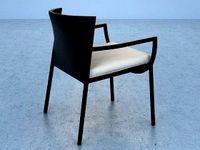
Delta
...delta
designconnected
emu group delta armchairs computer generated 3d model. designed by marin chiaramonte .
3ddd
$1
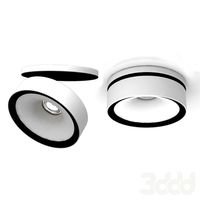
Delta Light
...delta light
3ddd
delta light , you-turn reo 3033
точечний светильник delta light
3ddd
$1
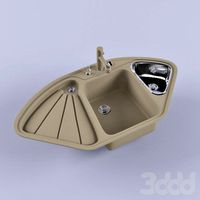
Blanco / delta
...blanco / delta
3ddd
blanco , мойка
мойка blanco delta со смесителем
3ddd
$1
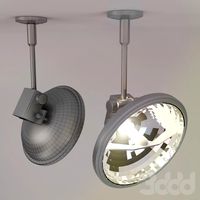
Delta Light Spot
...delta light spot
3ddd
delta light
светильник фирмы delta light
3ddd
free
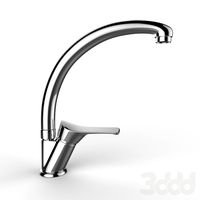
Bianchi Delta LVMDLT200100
...i delta lvmdlt200100
3ddd
bianchi delta , смеситель
смеситель bianchi delta lvmdlt200100
design_connected
free
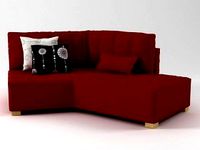
Delta 190
...delta 190
designconnected
free 3d model of delta 190 by zanotta designed by progetti, emaf.
design_connected
$27
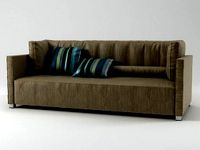
Delta 211
...delta 211
designconnected
zanotta delta 211 computer generated 3d model. designed by progetti, emaf.
design_connected
$27
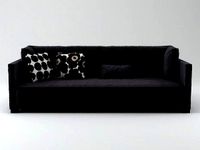
Delta 234
...delta 234
designconnected
zanotta delta 234 computer generated 3d model. designed by progetti, emaf.
